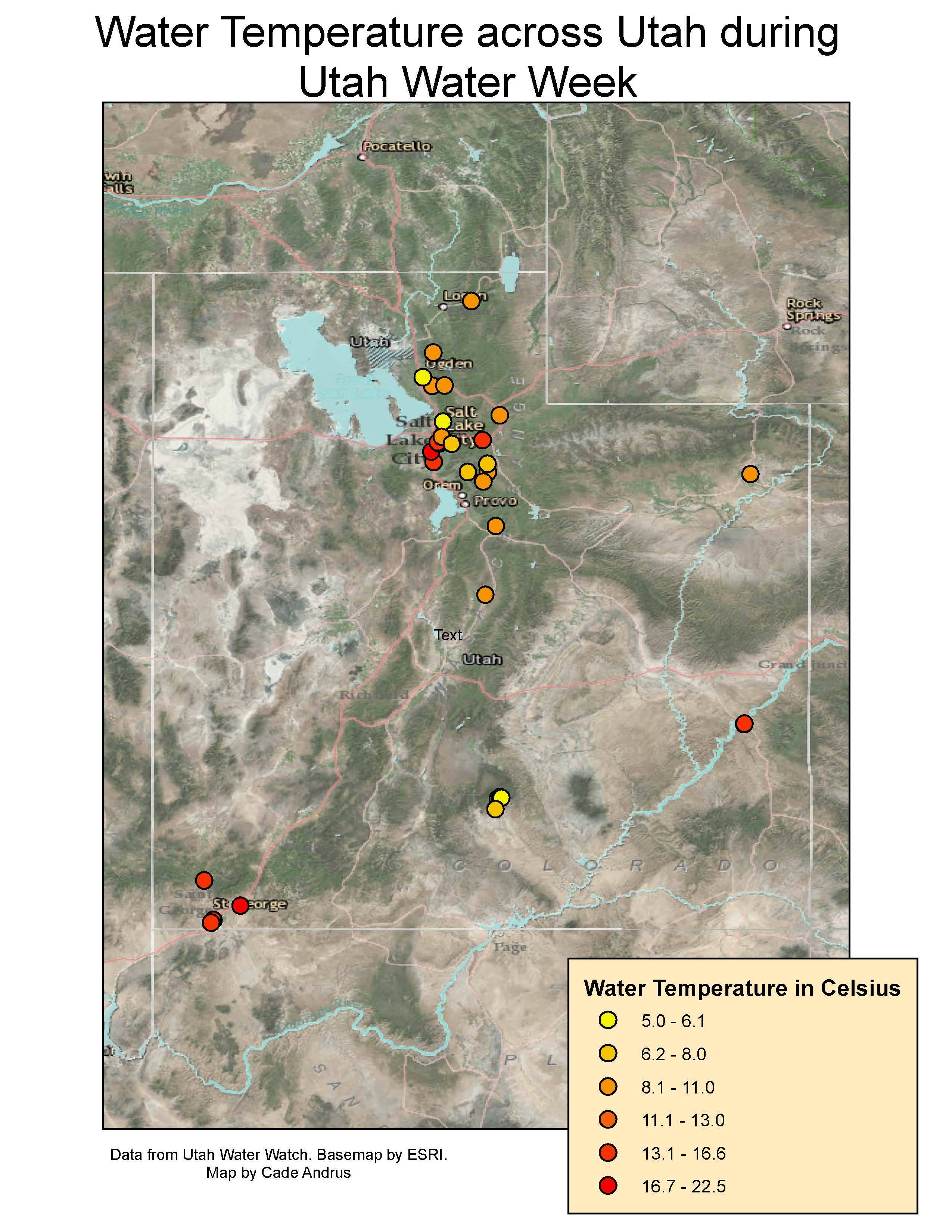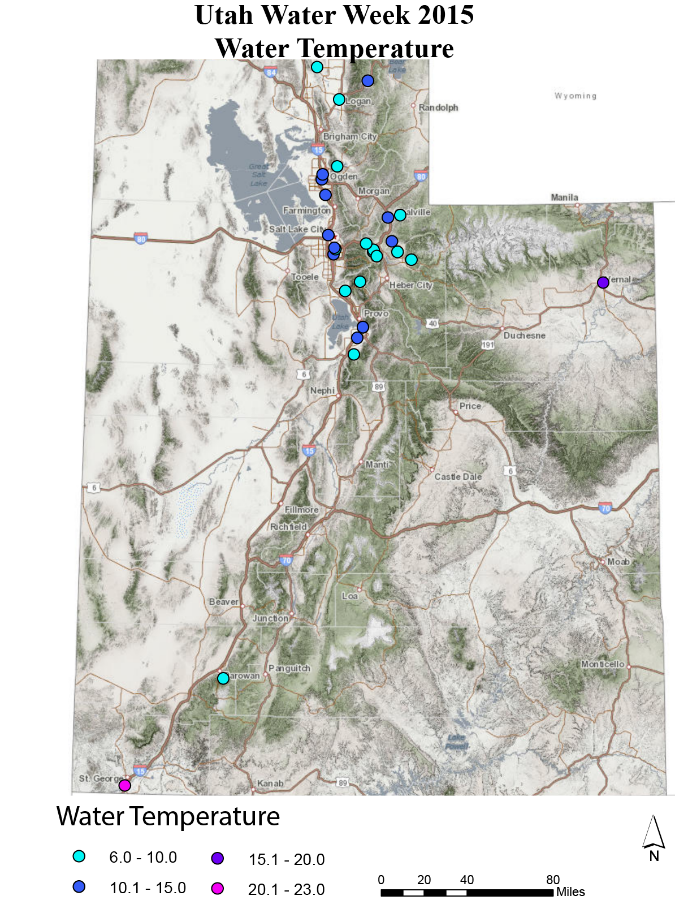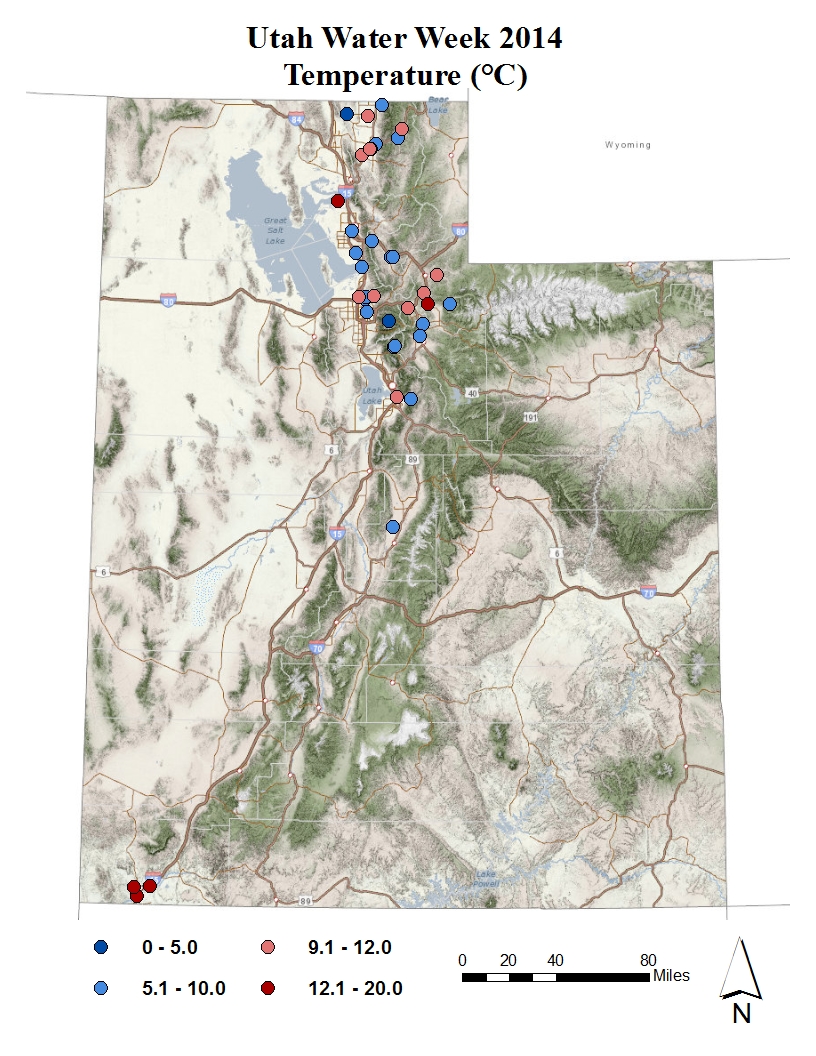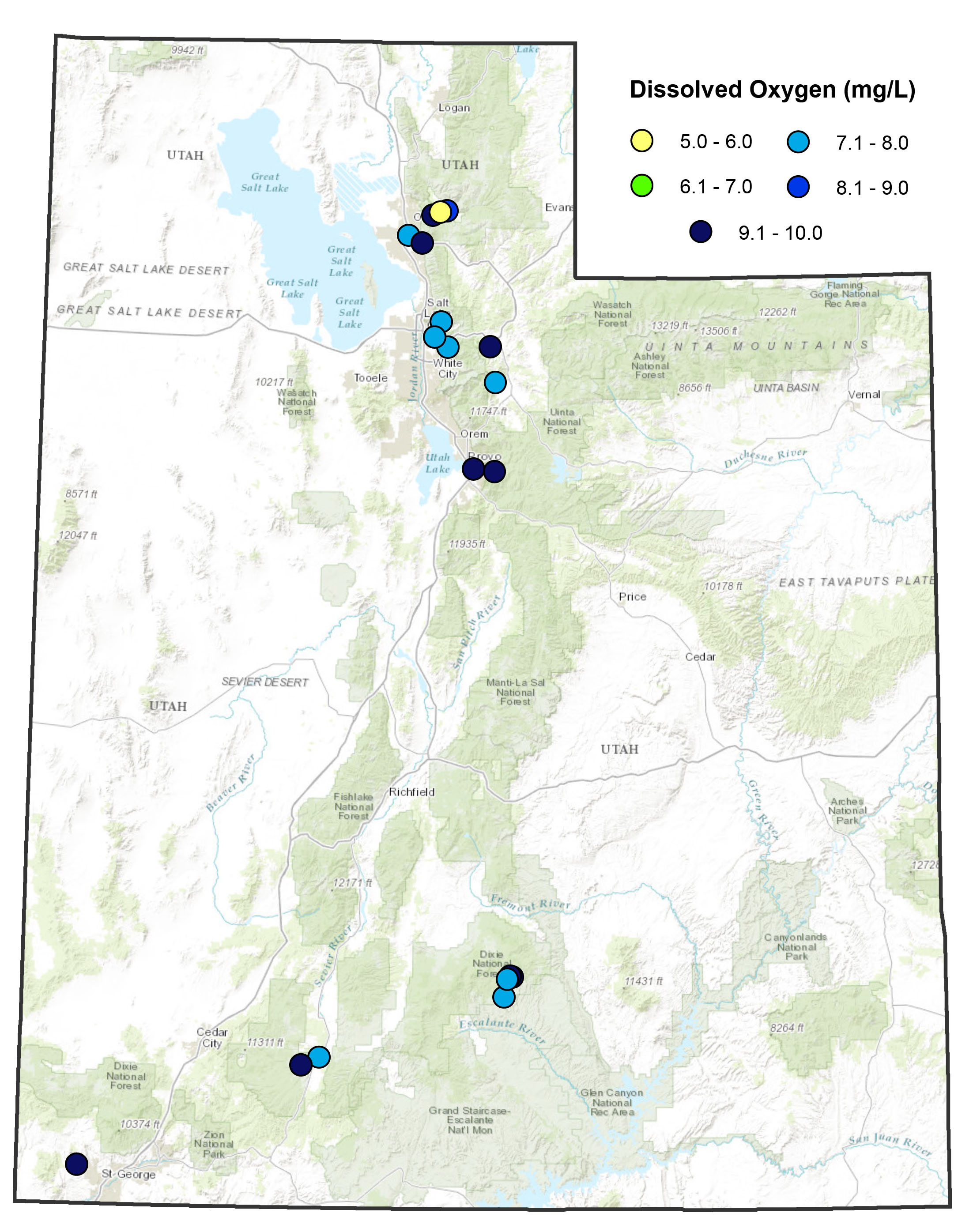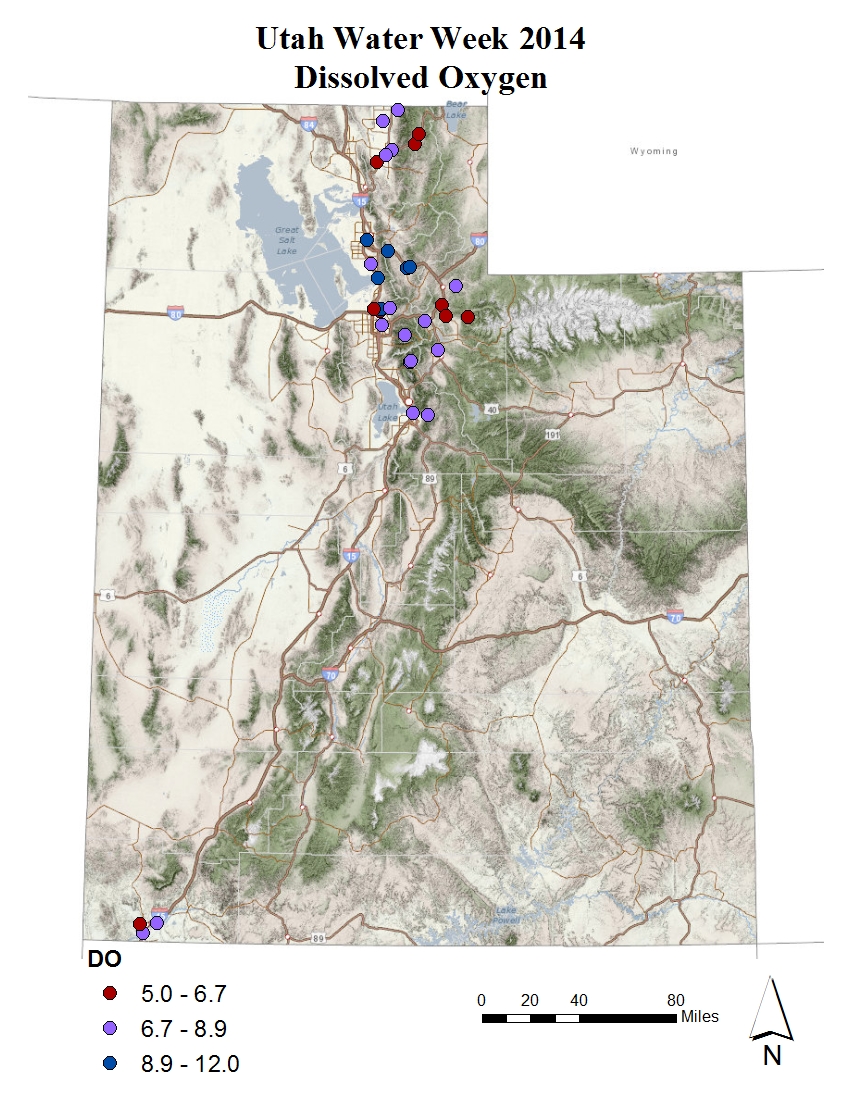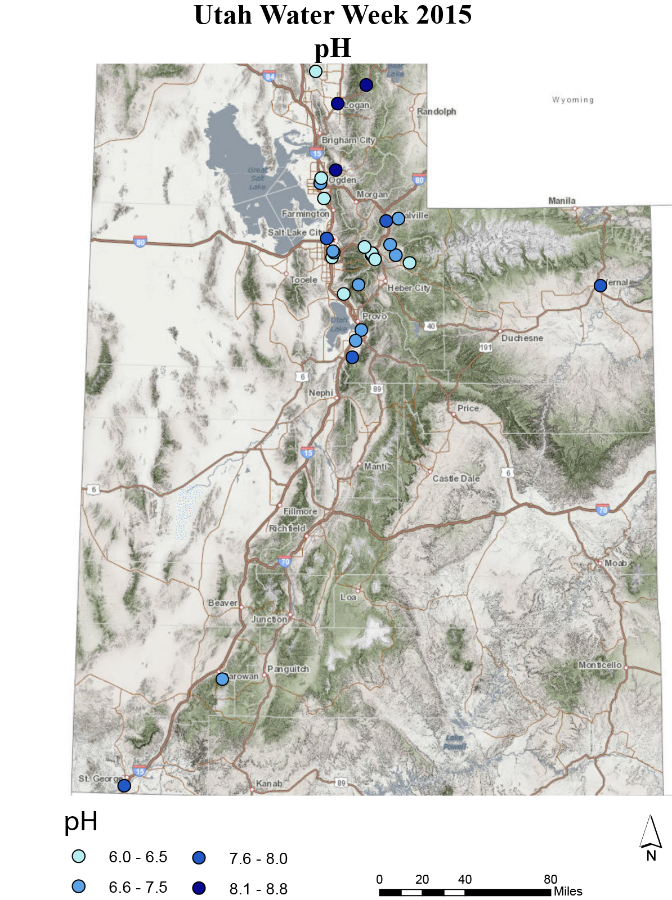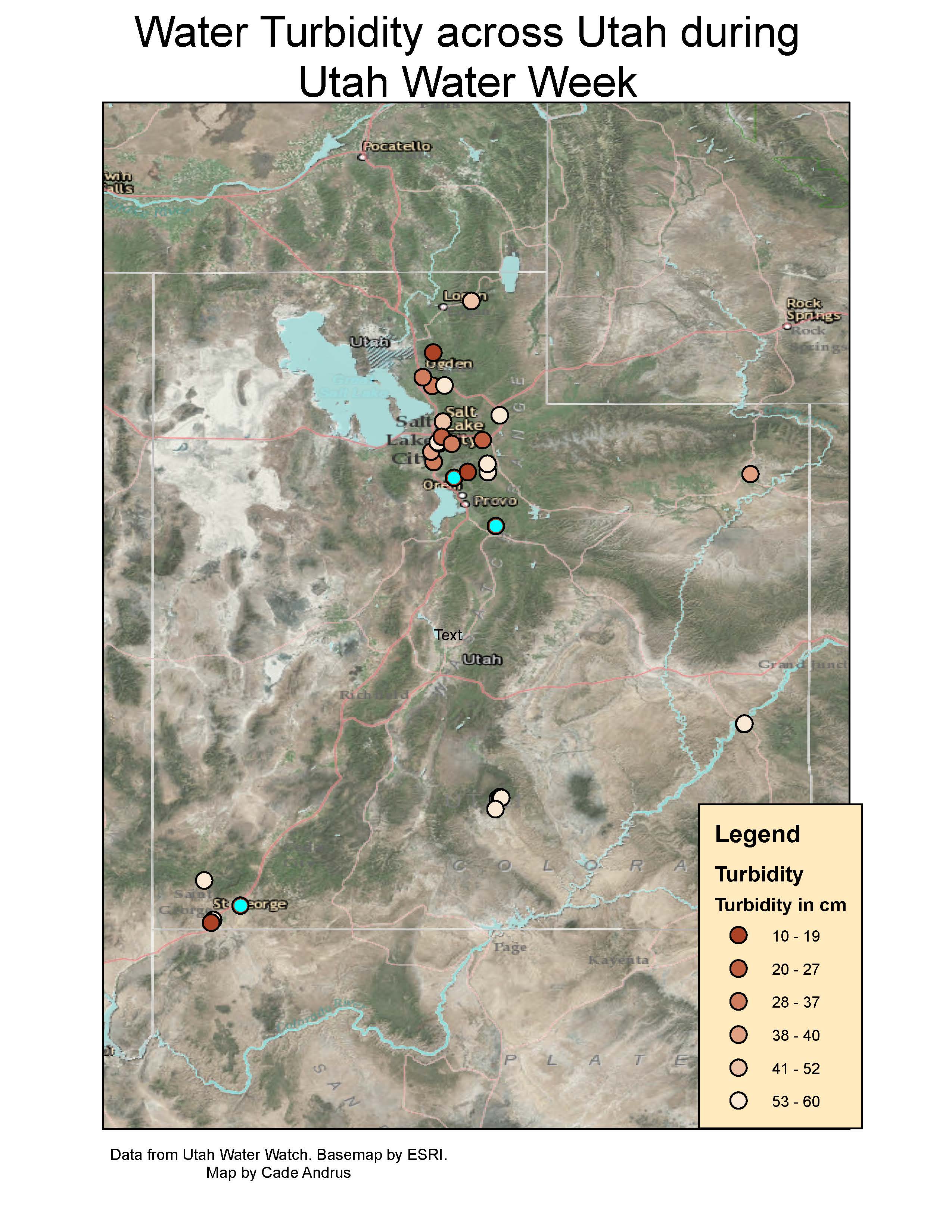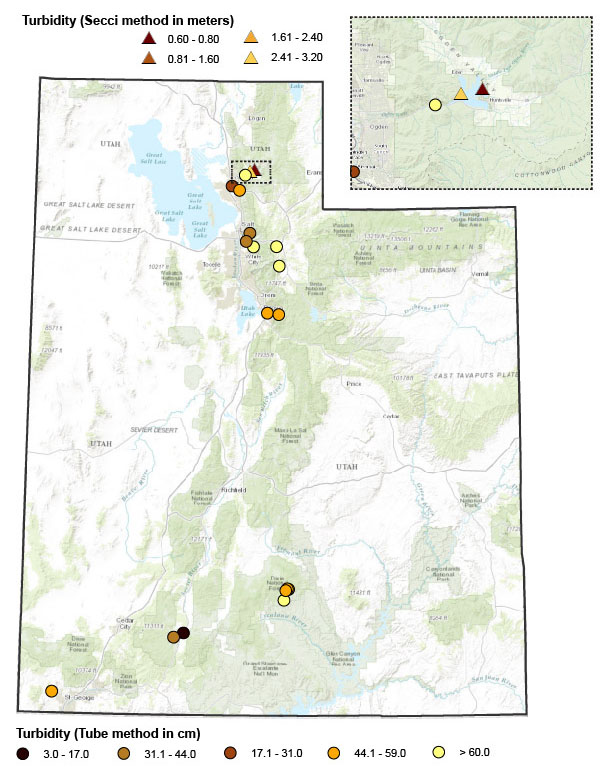Utah Water Week Results
2017 Utah Water Week Overview
This year marks Utah Water Watch's 4th annual Utah Water Week and was a success! A big thank you to all of the volunteers who helped make this snapshot of Utah's water quality possible. Results show generally good water quality, with only one extreme criteria exceedance of pH. See the data for yourself by downloading it from the UWW database.
Some impressive Utah Water Week statistics:
Number of monitoring events: 45
Total hours sampled by all volunteers: 54.7
Total miles driven: 620.8
Warmest air temperature sampled: 32.7 ºC (90.9 F)
Coldest air temperature sampled: 9.5 ºC (49 F)
Number of dead fish seen: 0
Average water temperature: 12.9 ºC
Average pH: 7.0
Average dissolved oxygen: 7.7 mg/L
Thank you, UWW volunteers! Continue below to find mapped data.
2016 Utah Water Week Results
This year marks Utah Water Watch's 3rd annual Utah Water Week and was a success! A big thank you to all of the volunteers who helped make this snapshot of Utah's water quality possible. Results show generally good water quality, with only one extreme criteria exceedance of pH. See the data for yourself by downloading it from the UWW database.
Some impressive Utah Water Week statistics:
Total number of hours sampled by all volunteers: 24
Total miles driven: 152
Warmest air temperature sampled: 37 ºC (99 F)
Coldest air temperature sampled: 7 ºC (45 F)
Number of dead fish seen: 0
Average water temperature: 9.5 ºC
Average pH: 7.0
Average dissolved oxygen: 8.7 mg/L
Our volunteers, YOU, continue to sacrifice time and energy, sampling in extreme weather conditions for the greater good. You are making a difference and we appreciate your continued efforts!
Click on the "Mapped Results" button to view maps with data to learn more about three important water quality parameters. All this data and more are available on our Utah Water Watch Database.
2015 Utah Water Week Results
During Utah Water Watch's 2nd Annual Big Water Week (May 3-9) volunteers collected monitoring reports on 29 sites across Utah. This provided a snapshot of Utah's water quality during Utah Water Week. Below are highlights of three key parameters.
Overall the reports indicate that we have good quality, healthy water! The majority of water quality parameters were in their normal ranges and no one observed any large problems or dead fish during the week. Many of the same parameters where very similar to 2014, with water temperature showing the greatest change. This is great news! All this data and more are available on our Utah Water Watch Database.
Utah Water Week 2014 Results
During Utah Water Watch's 1st Annual Big Water Week (May 4-10) volunteers collected monitoring reports on 38 sites across Utah. This provided a snapshot of Utah's water quality during Utah Water Week. Below are highlights of three key parameters.
Overall the reports indicate that we have good quality, healthy water! The water quality parameters were in their normal ranges and no one observed any large problems or dead fish during the week. This is great news! All this data and more are available on our Utah Water Watch Database.
Mapped Data
Temperature
The average temperature for all sites was 12.8 oC (3.3 oC warmer than last year) with the coldest temperature of 5.0 C at Parley's Canyon Creek and the warmest temperature of 22.5 oC at Steed Pond. Some of these temperature differences can be attributed to changes in elevation and location of the river or stream. Streams receiving melted snow water will generally be cooler this time of year than standing water in ponds. For example, the Jordan River is significantly warmer than streams up canyon. Water temperature in streams should not exceed 20
The average for all sites was 9.5 ºC (1.5 C colder than last year) with the coldest temperature of 6.0 ºC at the Weber River and the warmest temperature of 15 ºC in the Santa Clara River. Water temperature in streams should not exceed 20 ºC for cold water fisheries and 27 ºC for warm water fisheries.
The average for all sites was 10.9 C (1.0 C warmer than last year) with the coldest temperature of 6.0 C at Highland Glen Pond and the warmest temperature of 23 C in the Virgin River (also the highest from 2014). Water temperature in streams should not exceed 20 C for cold water fisheries and 27 C for warm water fisheries.
To learn more go to the Temperature Information page.
pH
Click the year to see a map of the data. Click on the map to enlarge.
To learn more visit the pH Information page or explore the data on the map below
Turbidity
The highest turbidity was found in the Jordan River watershed and the Lower Colorado watershed on American Fork River, Diamond Fork River and Virgin Rivers. The lower the reading, in centimeters (cm), the higher the turbidity. Overall, turbidity was high at many sites during Utah Water Week, likely due to increased flows compared during spring runoff. The most turbid sites are dark brown in color.
Learn more about turbidity here.




